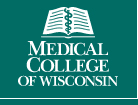Efficacy of SUN N4057 in Subjects With Acute Ischemic Stroke and Measurable Penumbra on Magnetic Resonance Imaging (MRI)
| Status: | Terminated |
|---|---|
| Conditions: | Neurology |
| Therapuetic Areas: | Neurology |
| Healthy: | No |
| Age Range: | 18 - 85 |
| Updated: | 4/21/2016 |
| Start Date: | September 2004 |
| End Date: | January 2007 |
A Phase IIb Randomized, Double-blind, Placebo-Controlled, Group-Sequential, Multicenter, Dose Finding Study of the Safety and Efficacy of SUN N4057 (Piclozotan) Administered for 72 Hours by Continuous Intravenous Infusion in Subjects With Acute Ischemic Stroke and Measurable Penumbra on MRI
This research study is designed to evaluate the safety, tolerability, and efficacy of SUN
N4057 (piclozotan) in subjects with acute ischemic stroke within 9 hours of the onset of
symptoms.
N4057 (piclozotan) in subjects with acute ischemic stroke within 9 hours of the onset of
symptoms.
The primary objective of the study is to determine the efficacy of a 72 hour infusion of SUN
N4057 (piclozotan) in subjects with clinical findings of an acute ischemic stroke and a
magnetic resonance imaging (MRI) demonstrating a measurable penumbra (perfusion-weighted
imaging [PWI] minus diffusion-weighted imaging [DWI] volume). Efficacy will be determined by
comparing the proportion of subjects with no growth in stroke lesion volume as assessed by
DWI at Screening to stroke lesion volume assessed by FLAIR (fluid-attenuated inversion
recovery) on Day 28 in the piclozotan group versus the placebo group.
N4057 (piclozotan) in subjects with clinical findings of an acute ischemic stroke and a
magnetic resonance imaging (MRI) demonstrating a measurable penumbra (perfusion-weighted
imaging [PWI] minus diffusion-weighted imaging [DWI] volume). Efficacy will be determined by
comparing the proportion of subjects with no growth in stroke lesion volume as assessed by
DWI at Screening to stroke lesion volume assessed by FLAIR (fluid-attenuated inversion
recovery) on Day 28 in the piclozotan group versus the placebo group.
Inclusion Criteria:
General inclusion criteria:
- Males or females >= 18 and <= 85 years of age at randomization. Female subjects must
be either:
- Surgically sterile;
- Postmenopausal for at least 1 year; or
- Non-pregnant, confirmed by a serum pregnancy test, and using a method of birth
control that is acceptable to the investigator.
- Neurological examination demonstrating localizing cortical signs
- Receipt of study drug less than 6 hours (50% of subjects) or between 6 and 9 hours,
inclusive, (50% of subjects) after the onset of symptoms (for un-witnessed stroke,
last time seen in normal state or at bedtime for un-witnessed stroke during sleep)
- Signed informed consent from subject or legally acceptable representative
- NIHSS score of 6 - 22, inclusive, or at least 2 on the aphasia item of the NIHSS with
a location of MRI findings consistent with aphasia
MRI-determined inclusion criteria:
- Acute ischemic stroke with substantial cortical involvement in the middle cerebral
artery (MCA) distribution, as verified by the Screening DWI abnormality and/or
Screening PWI abnormality. (Note: white matter involvement, in addition to cortex, is
not an exclusion.)
Exclusion Criteria:
General exclusion criteria:
- Two or more of the following:
- Reduced level of consciousness (score >= 2 on NIHSS Q1a)
- Forced eye deviation or total gaze paresis (score of 2 on NIHSS Q2)
- Dense hemiplegia (no movement) of upper and lower extremities (score of 4 on
NIHSS Q5 regarding motor arm and a score of 4 on NIHSS Q6 regarding motor leg)
- Pre-stroke modified Rankin score >= 2 at Screening
- Rapid neurological improvement from Screening up to the start of drug infusion
- Persistent systolic blood pressure (SBP) > 220 mmHg and/or diastolic blood pressure
(DBP) > 120 mmHg (confirmed by at least three readings taken at least 3 minutes
apart) prior to randomization. If subsequent readings are consistently below these
levels, either spontaneously or following mild antihypertensive therapy, subject may
be enrolled.
MRI-determined exclusion criteria:
- Intracranial hemorrhage as verified by Screening MRI. (Note: intracranial hemorrhage
on pre-screen computerized tomography [CT] scan also excludes subject.)
We found this trial at
26
sites
Via Christi Regional Medical Center Via Christi Health's rich history of serving the people of...
Click here to add this to my saved trials
Wayne State University Founded in 1868, Wayne State University is a nationally recognized metropolitan research...
Click here to add this to my saved trials
Click here to add this to my saved trials
Click here to add this to my saved trials
Charleston, West Virginia 25304
Click here to add this to my saved trials
Click here to add this to my saved trials
Click here to add this to my saved trials
Click here to add this to my saved trials
Click here to add this to my saved trials
Click here to add this to my saved trials
Click here to add this to my saved trials
Click here to add this to my saved trials
Click here to add this to my saved trials
Click here to add this to my saved trials
Click here to add this to my saved trials
Click here to add this to my saved trials
Click here to add this to my saved trials
Click here to add this to my saved trials
Medical College of Wisconsin The Medical College (MCW) of Wisconsin is a major national research...
Click here to add this to my saved trials
Click here to add this to my saved trials
Click here to add this to my saved trials
801 N Rutledge St
Springfield, Illinois 62702
Springfield, Illinois 62702
(217) 545-8000

Southern Illinois University School of Medicine At SIU School of Medicine, research includes biologically oriented...
Click here to add this to my saved trials
Click here to add this to my saved trials
Click here to add this to my saved trials
Click here to add this to my saved trials
Worcester, Massachusetts 01655
Click here to add this to my saved trials


